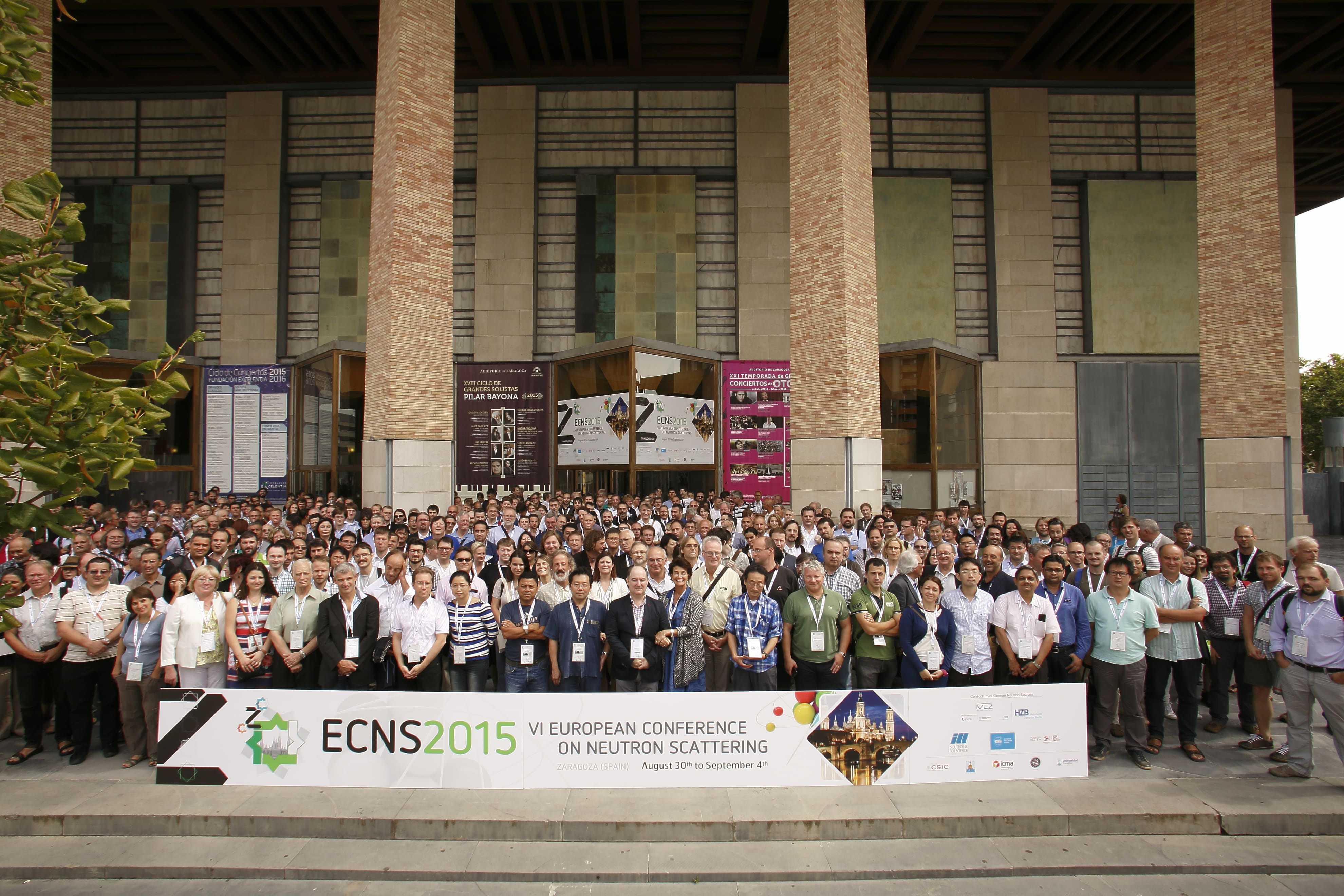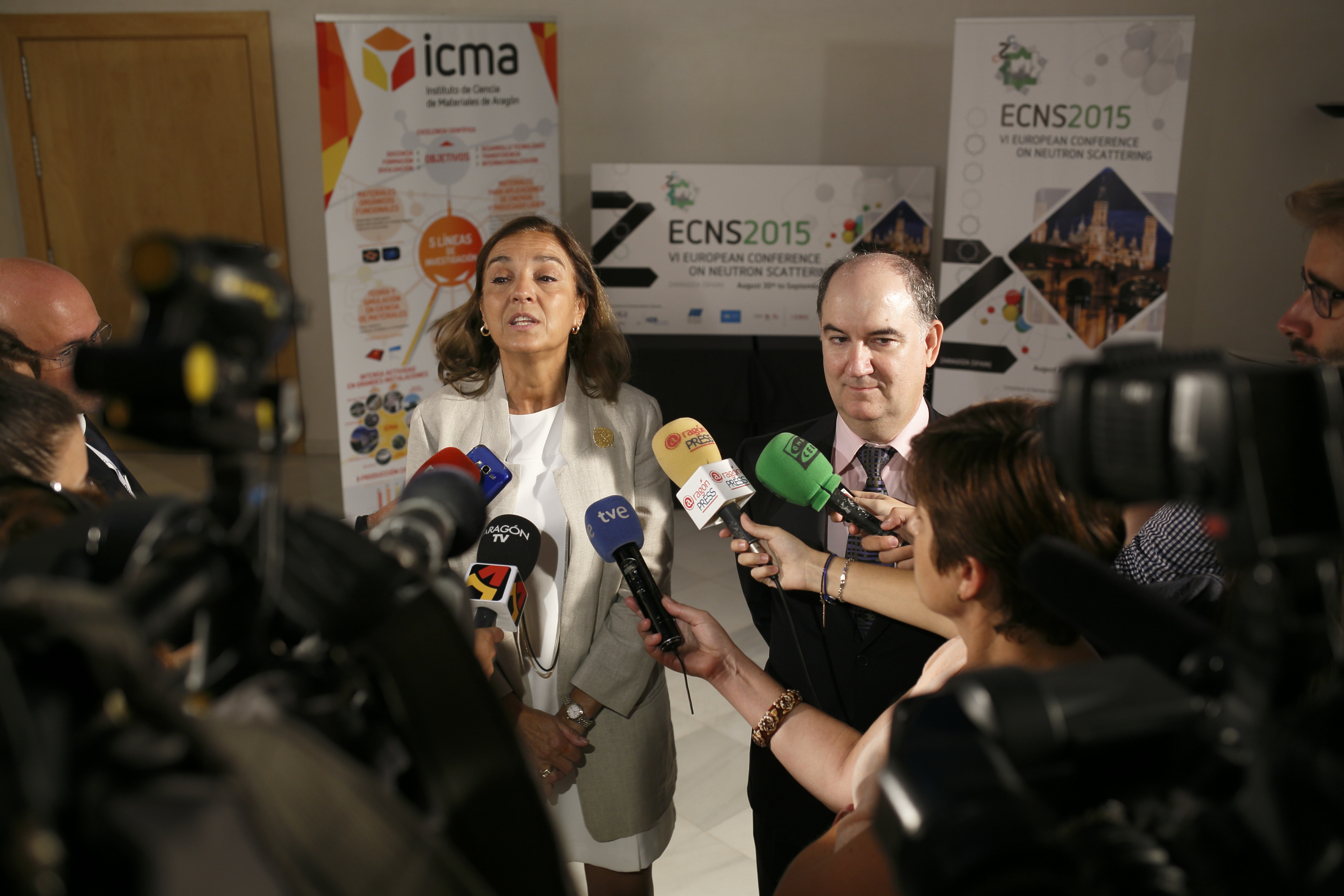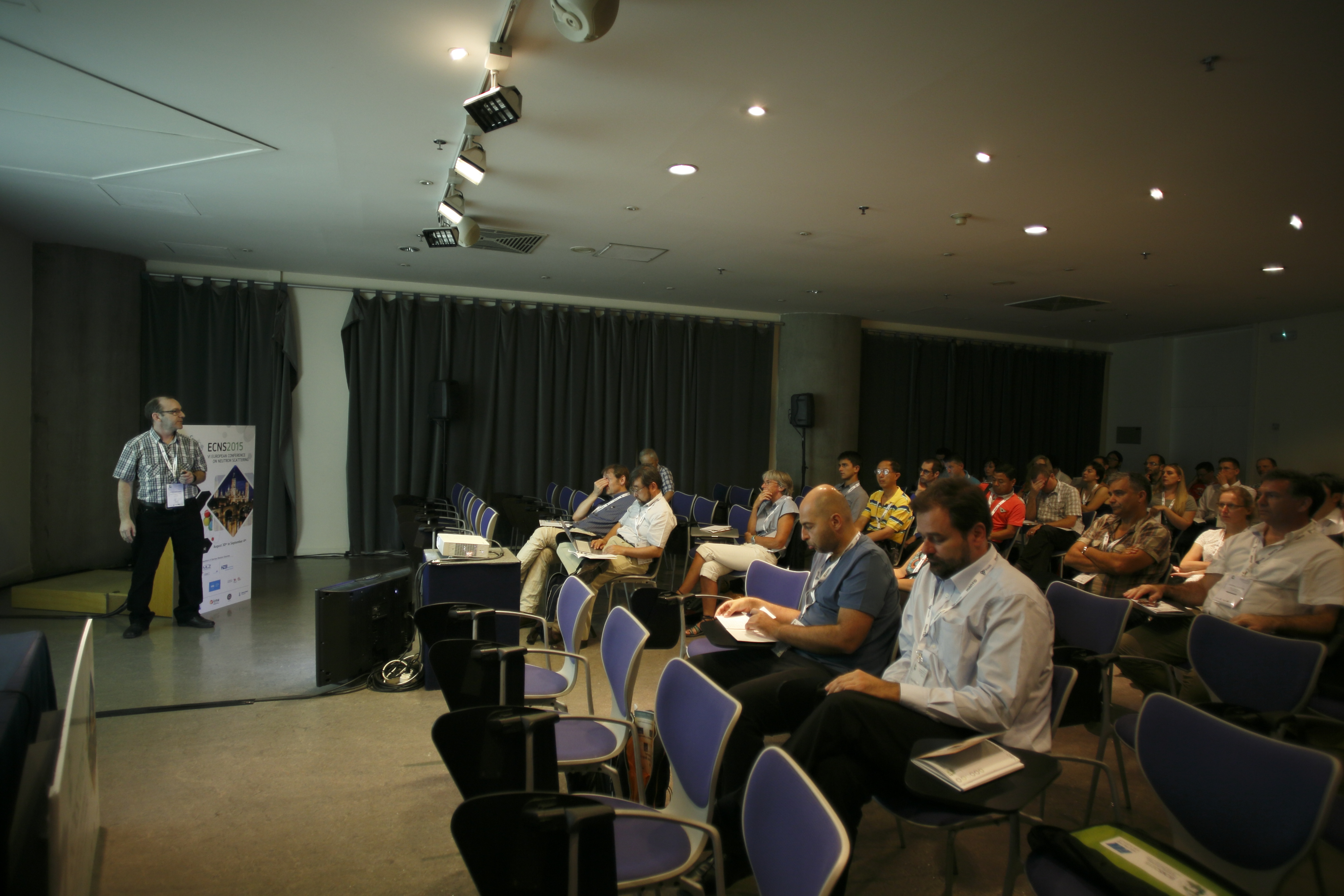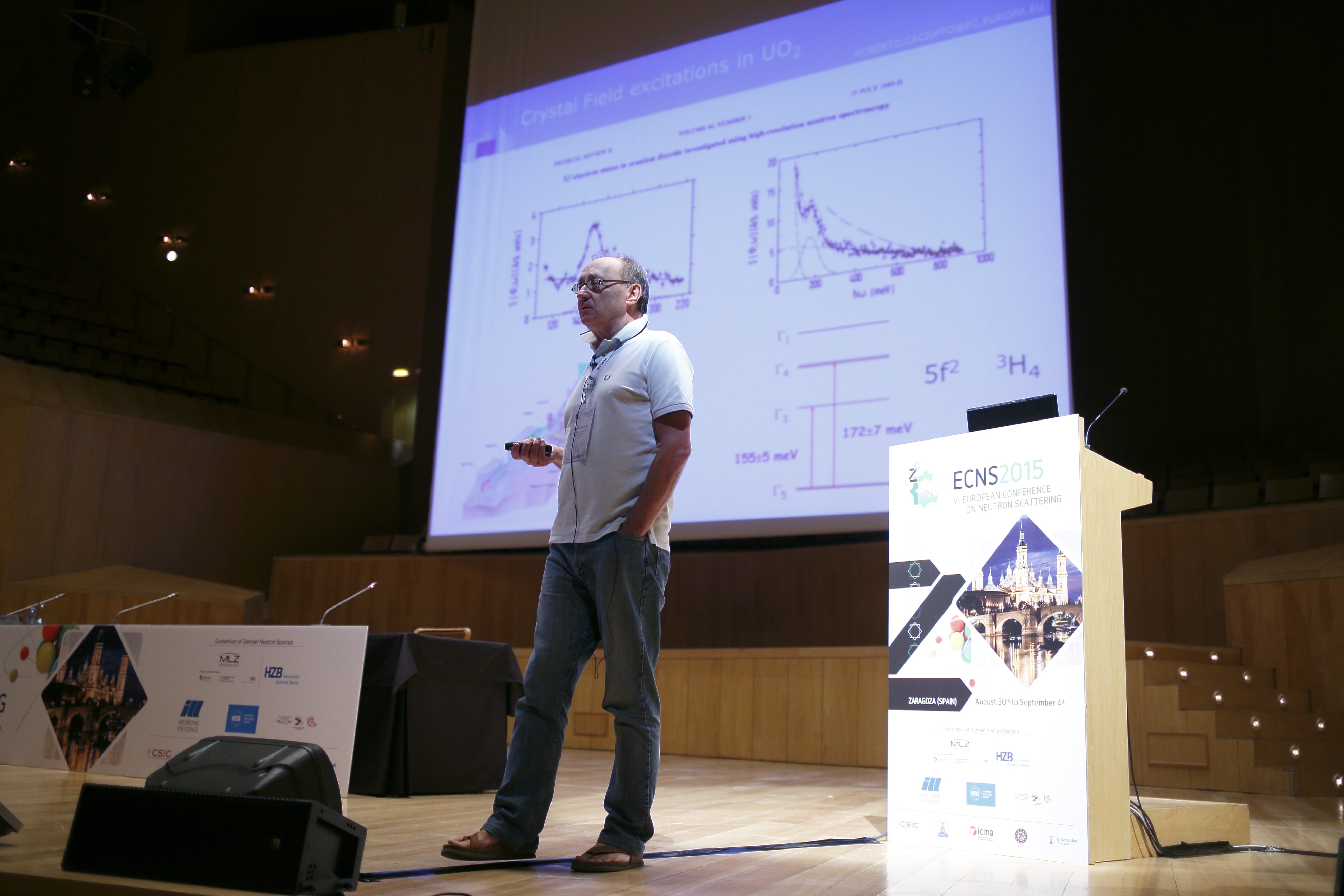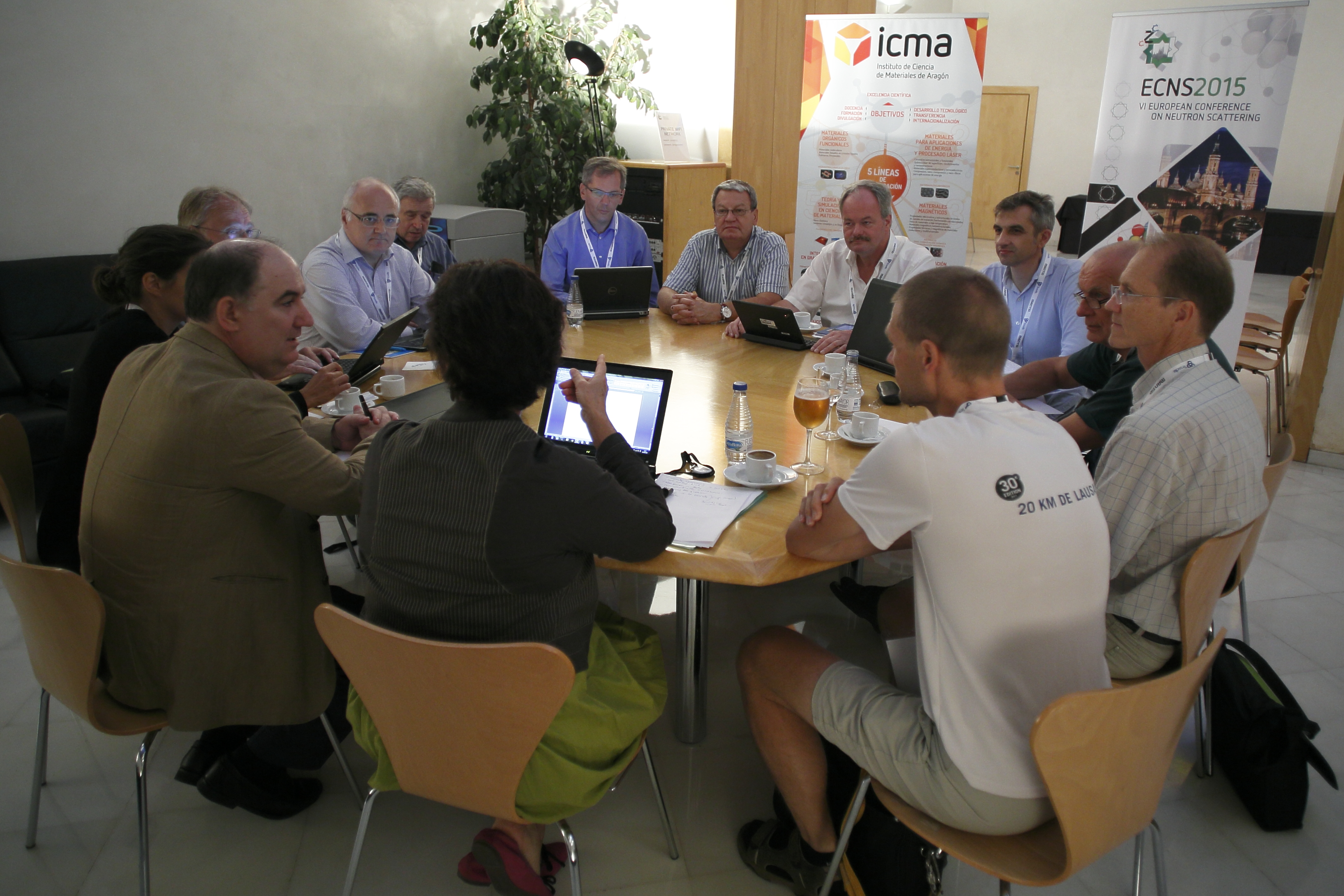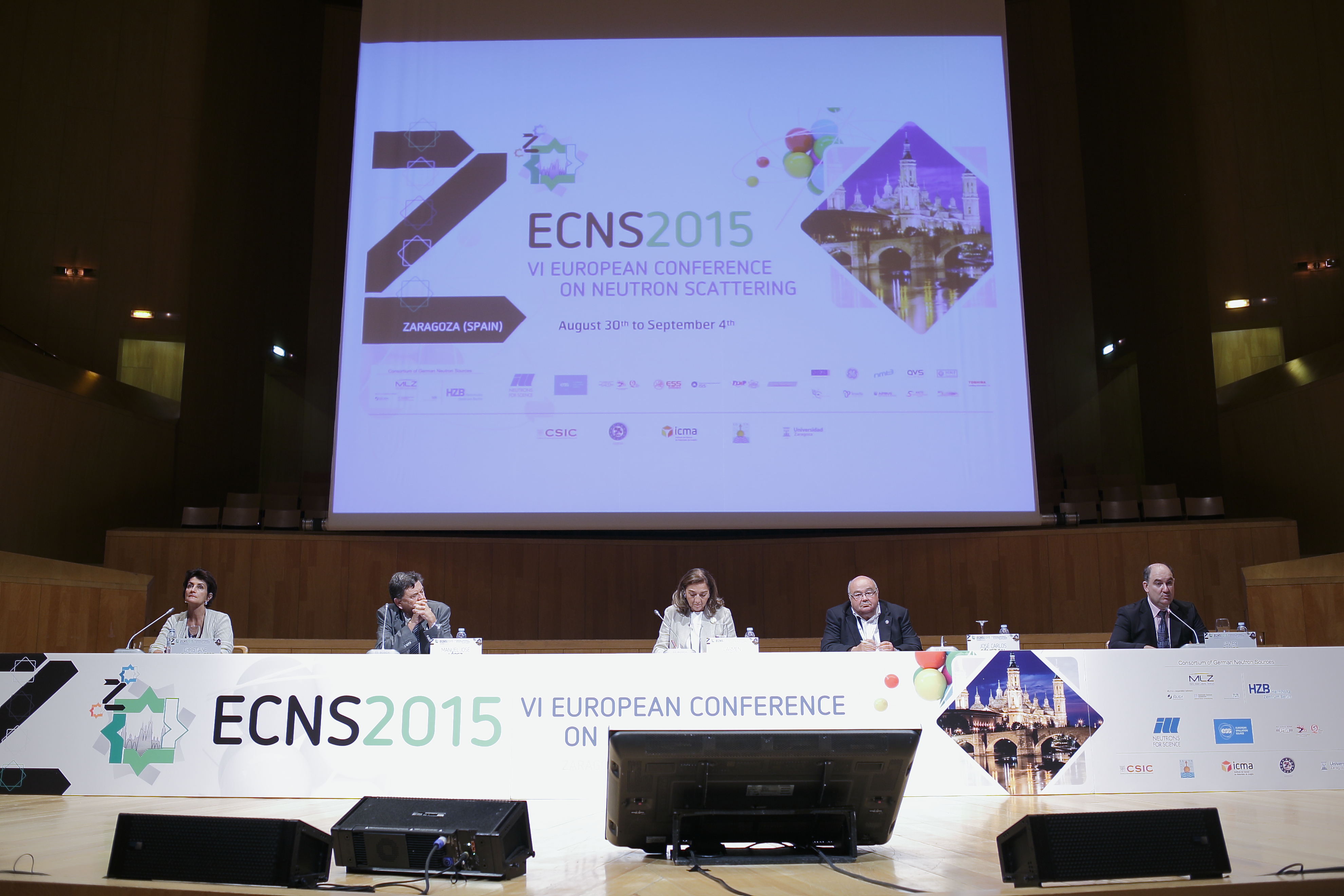
VI European Conference on Neutron Scattering
It was a great pleasure for the Materials Science Institute of Aragón (CSIC- University of Zaragoza) to host the VI European Conference on Neutron Scattering (ECNS) from the 30th of August until the 4th of September 2015. The meeting was held in Zaragoza, Spain, a prosperous and well communicated city founded by the Emperor Octavio Augustus over 2000 years ago. Zaragoza, a city where different cultures, Muslims, Jewish, and Christians have left their mark is famous for its landmarks such as the Basílica del Pilar, La Seo Cathedral and the Aljafería Palace as well as the local cuisine.
The Spanish Secretary of State for Research, Development and Innovation, Carmen Vela; the Rector of the University of Zaragoza, Manuel José López Pérez; the Rector of the University of Cantabria, José Carlos Gómez Sal, and the President of the European Neutron Scattering Association, Christiane Alba-Simionesco; participated in the conference opening ceremony.
This Conference was built on the success of previous meetings held in Interlaken (1996), Budapest (1999), Montpellier (2003), Lund (2007), and Prague (2011). The conference is organized every four years as a forum for the European neutron scattering community to discuss recent developments and advances in all branches of science in which neutron scattering is, or eventually could be used. This year the conference gathered more than 650 participants from 31 different countries from around the globe including Japan, United States of America, Taiwan, Republic of Korea, India, Argentina, China and Australia.
The main topics in the conference were Neutron Sources and Facilities, Neutron Instrumentation (Optics, Sample Environment, Detectors and Software), Fundamental Science, Chemistry of Materials (Structure and Spectroscopy), Magnetism, Superconductivity and other Electronic Phenomena, Functional Materials, Glasses and Liquids, Thin Films and Interfaces, Soft Condensed Matter, Health and Life Sciences, Engineering applications, Cultural Heritage and Archaeometry. This is actually the first year that the topics “Cultural Heritage and Archareometry” and “Fundamental Science” had dedicated sessions within the programme. During the Cultural Heritage and Archareometry sessions we learned how neutron techniques have been crucial to decipher the structure of valuable works of art such as “the violinist” by Pablo Gargallo an Aragonese sculptor and painter.
Plenary talks were presented by Professor Roberto Caciuffo, Dr Frank Gabel, Professor J. Manuel Perez-Mato, Professor Jean-Marie Tarascon, Professor Paul Schofield, Prof. Peter Fierlinger, Professor Helmut Schober. In addition to the plenary talks, 33 keynote talks and 222 oral presentations were given during the four parallel sessions as well as 325 poster presentations. The poster sessions, which were held during the lunch and coffee breaks, were well attended and participants had time to visit not only the posters but also the exhibition.
The VI European Conference on Neutron Scattering (ECNS) was supported by our institutional sponsors (MINECO, Government of Aragón, CSIC and University of Zaragoza) as well as one platinum sponsor (Consortium of German Neutron Sources), three gold sponsors (ILL, PSI, ESS), four silver sponsors (Swiss Neutronics, ISIS, ESS Bilbao, JINR-FLNP) and 12 bronze sponsors (NMi3, Airbus Defence & Space, Tessella, Oxford Instruments, General Electric, Laboratoire Léon Brillouin, HNF Technologies, AVS, ANTE, Mirrotron Ltd, Toshiba, and ENATE). The Sponsors ranged from neutron sources, consortia and laboratories to industrial organisations.
A total of 19 graduate students and post-graduate students received the International Union of Crystallography fellowships (IUCR). Fellows came from Denmark, France, Hungary, Russia, UK, Australia, Japan and Spain.
Christiane Alba-Simionesco, the chair of the European Neutron Scattering Association (ENSA), announced that there would be a new prize for science and innovation to reward early career researchers. ENSA has a long-standing culture of rewarding scientists for their work and at the ENSA session the 2015 Walter Hälg Prize was awarded to Prof Dr Helmut Rauch for his outstanding and seminal contributions to the fundamental aspects of neutron physics and optics and many related aspects of quantum physics. The Seventh Erwin Felix Lewy Bertaut Prize of the European Crystallographic Association (ECA) and European Neutron Scattering Association (ENSA) was awarded to Dr. Giorgio Schirò for his work on movement of biological matter on the last day of the conference.
A number of satellite meetings were also held during the conference such as the Swiss Neutron Scattering Society General Assembly, the Neutron sources directors meeting as well as the European Neutron Scattering Association (ENSA) meeting. In particular, the Neutron sources directors meeting gathered directors from 14 Neutron sources from countries around the world such as Australia, the US, Korea, China and Japan. The ENSA meeting, which was held on the second day of the conference, hosted delegates from Holland, Norway, Denmark, Germany, Norway, Spain and France.
The organisers also opened the event to the general public after 16:30 every day. This attracted more than 25 external participants.
As mentioned in the September edition of the NMi3 newsletter several national facilities will close by 2020, which will cause the overall neutron capacity in Europe to be greatly reduced. Design studies for new, cost effective and energy efficient, accelerator-based sources must be initiated now in order to rejuvenate the ecosystem of European facilities by 2025. We hope that the high level of participation and the high quality of the science presented at ECNS in Zaragoza will transmit a clear sign to the European Authorities about the necessity to support our diverse community by maintaining the European capability and capacity, which is indispensable in both the short and long term.
The scientists of the Materials Science Institute of Aragón (ICMA), founded 30 years ago as a joint research centre between the Spanish National Research Council (CSIC) and the University of Zaragoza, have been very active in promoting and using neutron scattering techniques in Spain for many years. The Sixth ECNS is not an end-point for the Materials Science Institute of Aragón (ICMA) but, on the contrary, it represents another step forward, with the institute acting as a dynamic agent, together with the Spanish Neutron Scattering Community, in the neutron landscape within Spain as well as in Europe.
The organizers would like to thank all the attendees for their active participation and enthusiasm, which ensured that the conference was a great success.
The proceedings will appear in the open access Journal of Physics: Conference Series (JPCS), which is part of IOP Conference Series.
Javier Campo
Materials Science Institute of Aragón
(CSIC- University of Zaragoza)


